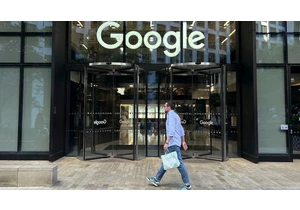Despite the boom of the so-called influencer economy over the past decade-plus, creators who make their living posting content on YouTube, Facebook, Instagram, and more are continuing to face now-familiar challenges: the perils of building a business on the back of an ever-changing algorithm determined by Big Tech companies; the grueling reality of having to post multiple pieces of content a day; and, ultimately, for many, the meager financial reward. Indeed, for every TikTok star that is raking in millions, there are thousands of other creators who can barely make ends meet. This reality, coupled with a rise of new platforms such as Substack, Gumroad and Kajabi, which allow creators to connect with their fans and earn money from them directly, has led to what a new report dubs “the rise of the independent creator.” Commissioned by Mighty Networks, another one of those new-ish platforms that allow creators to be more in control of their profits, and conducted by Nonfiction Research and Bodacious Strategy Studio, the report looked at 1,624 creators who earn an income from what they do, and analyzed their work life. (Although the report’s findings clearly benefit Mighty Networks, the study was conducted across the entire creator economy.) The conclusion: “When you look under the hood at a creator’s business, the foundation is shaky AF,” the report reads. But for all the hand-wringing and tales of woe—the report cited a “need for mental health programs to help those trying to stay upright on a content treadmill designed to please the algorithm Gods”—there is good news ahead. Namely in the form of a new era of creators who won’t have to freak out the next time Facebook goes dark for several hours. This new “independent” creator still builds audiences on Facebook and Twitter, but relies on them less, instead investing in more niche communities built on a single platform, where growth and profitability are less reliant on scale. “What came through loud and clear,” says Gina Bianchini, founder and CEO of Mighty Networks, “is that creators are not ever going to leave social media. This is not about ‘hashtag delete Facebook.’ But [what] we are talking about is people being much more mercenary about social media in pursuit of finding meaning, and being much more of a missionary when it comes to their own community and their own, direct model. They are putting ownership front and center.” How they are doing this is broken down in a “manifesto” in the report that boils down to these four steps: They own, they don’t rent The idea, as Bianchini pointed out, isn’t to totally ditch Facebook and Twitter, but for creators to become less reliant on them, instead looking to platforms like Substack and Gumroad where they can own their own content through subscriptions, memberships, and tips. Indeed, according to the report, 57% of creators see direct revenue through features like subscriptions as more crucial to their future than social platform revenue. The goal is to also unite various content offerings on one platform, as opposed to offering online courses, say, on one platform, and video content on another. Platforms, in other words, “where they can put their brand front and center, where they can mix and match content, community, events, and subscription features, and where they can own the relationship with their fans, followers, and members,” the report says. “In this model, Big Social serve as feeders and funnellers, not feudal overlords.” They go niche, not broad Consider this: The report says that for a creator to earn $1,000 a month, they need either 229 Substack subscribers, 224 Patreon supporters, 100,000 Instagram followers, or 2 million monthly YouTube views.
The reason? Smaller, more targeted audiences that are as much about joining a community as following an individual are ultimately more valuable to creators. That’s because creators are able to connect followers to each other and unite them in a passionate cause, per se, as opposed to giving them a place to simply “like” or leave a comment about content. This idea was first posited by Wired cofounder Kevin Kelly in his 2008 piece “1000, True Fans.” “For Kelly,” the report reads, “it was never just about the artist’s content. Rather, ‘1,000 True Fans’ tapped into how fans valued each other and being part of a passionate scene.” They cultivate communities, not audiences These new, independent creators are more interested in building hubs where people gather and communicate as opposed to places where people drop by to click a few thumbs-up buttons. Through memberships and subscriptions, creators can offer their community members more—specifically more opportunities to engage and more events to attend that are all aimed at bringing the group closer. This, in turn, means creators are less beholden to a model where they are having to constantly entertain audiences with an endless stream of content. A community lives and breathes more independently—it “develops its own energy, its own dynamism, and its own vibe—far more so than a free audience waiting for the next broadcast.” This frees up creators to post more meaningfully as well as less frequently. According to the report, while creators feel they have to post five to seven times a day on Big Social platforms in order to generate enough revenue to live on, one community platform generated $1,000 a month with just two to three posts per week. They build network effects, not content conveyor belts The allure of platforms like Facebook and Instagram for creators has been the instant ability to plug into those platforms’ networks. But the idea now is for creators to build up their own networks, using their own tools. Again, the idea is not just to serve up content to an array of social media sites, but to build a primary online hub that followers will come back to again and again to engage with because of its community atmosphere. These communities need not have massive social media followings. The report says that on one platform that allows creators to build their own direct-to-consumer following, the platform’s top 250 revenue-producing users had a median social media following of just 8,500. Bianchini reasons that once people make this calculation—that “it’s easier to be successful with a smaller number of people”—the size of the creator economy will balloon from its estimated size of 50 million creators to several times that. “When you start to add up all the people that have a Facebook group with 10,000 members and an Instagram following with over 10,000 people and who then start to make money not just through sponsorships and rev-split . . . what happens is more people get to do this.”
Chcete-li přidat komentář, přihlaste se
Ostatní příspěvky v této skupině

In a time where tariff price hikes are invading seemingly every

Remember the viral “Ice Bucket Challenge” of 2014? Over a decade later, it’s back—

The U.S. Federal Trade Commission on Monday sued Uber Technologies, accusing it of signing up some Uber One subscribers without their knowled

As Big Tech kicks off its quarterly earnings season this week, the industry’s bellwether companies have been thrust into a cauldron

Weeks ahead of his death, Pope Francis dedicated this month’s prayer intention to

Remember when TikTok went nuts for “Dubai chocolate”? Well, that fervor is now causing an international shortage of pistachios.
The trend took off in 2023 when food reviewer Maria Vehera

Google will confront an
